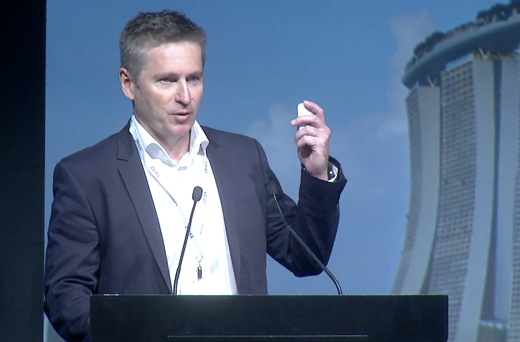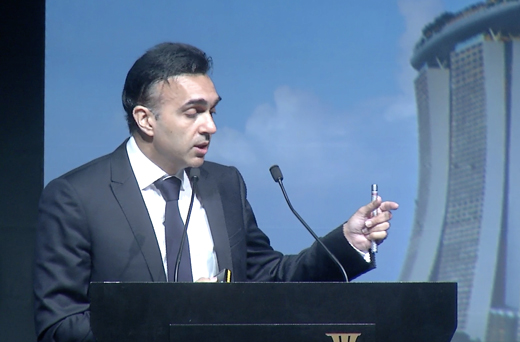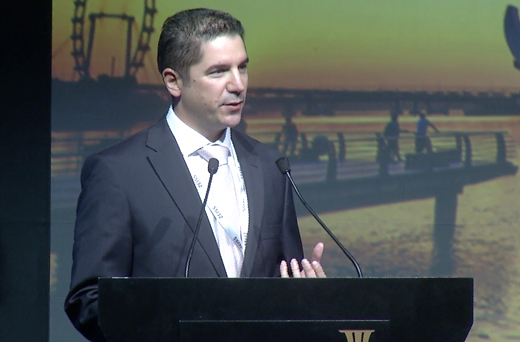ZEISS Newsletter
Issue #7 |
If the newsletter is not shown in its entirety,
please click here. |
|
| ZEISS UPDATE |
 |
|
| Optimizing SMILE Outcomes |
Although small incision lenticule extraction (SMILE) is a newer refractive procedure, its continued use and study has made it a widely applied and accepted refractive alternative to its predecessors PRK and LASIK.
Dr. Gerard Sutton, MBBS, M.D., FRANZCO, medical director of Lions NSW Eye Bank and Head of the Corneal Unit at the Sydney Eye Hospital, used the pendulum theory to explain SMILE’s progress since its inception: “When we see new technology, it comes with a lot of hype – the pendulum swings, and not a lot of people embrace it. Then, as people accumulate their experience, the pendulum swings back the other way, and we find that these surgical procedures are not perfect. Some will find their equilibrium, and others will disappear. I would argue that SMILE has found its equilibrium.”
For any new procedure, finding this equilibrium is crucial. And since SMILE’s introduction in 2006, it has seen its share of tests, studies and reviews. Today, this research has given ophthalmologists the ability to optimize patient outcomes to achieve even greater results. |
|
|
| Dr. Gerard Sutton talking about how to improve SMILE patient outcomes |
|
| Dr. Sutton began his SMILE journey a short time ago (in 2014) – but now, it’s the most common corneal refractive procedure he performs. Below we explore Dr. Sutton’s, as well as other recognized surgeons’, experience with SMILE, and share their advice to optimize patient outcomes. |
|
| 10 Ways to Optimize Patient Outcomes in SMILE |
- Understand that energy settings are critical. “The amount of time we spent trying to get our energy settings correct in Sydney was significant,” said Dr. Sutton. He and his team learned that energy settings are not the same around the world – and in fact, they can vary greatly: “You must know and understand your laser.”
- Control the climate in your operating theater (OT). “The second thing we did that made a huge difference in terms of our outcomes was moving our lasers into an operating theater where we had very good control of both our temperature and our humidity. That’s made the biggest difference in terms of ease of dissection and in terms of how we do our work,” said Dr. Sutton, who keeps the temperature in his OT at 22-24 degrees Celsius, and the humidity at 55-65 percent.
- Screen properly for ectasia. Make sure your patient is suitable for SMILE by properly screening for ectasia. “If you think that a patient is not suitable for LASIK, because you are concerned about some aspects of their corneal topography or tomography, then I would argue that those patients are not suitable for SMILE either,” he said.
- Tear film management is critical: get it just right. Dr. Sutton uses the “Goldilocks Rule”: not too wet and not too dry. “If your corneal surface has too many tears, you run the risk of a suction break. If it’s too dry or if there’s debris in the tear film, you run the risk of not getting adequate femtosecond breakthrough,” Dr. Sutton explained. In his practice, he uses two drops of anesthetic and an aspirating speculum – that way, if a patient is producing a lot of tears, he can leave the aspirating speculum on low during the actual procedure. “This is much more critical if you’re using an Intralase platform or one of the other platforms,” he added.
|
|
|
| Dr. Jodhbir Mehta discussing optimization of centration techniques in SMILE |
|
- Optimize centration technique to maximize results and minimize aberrations. Dr. Jodhbir Singh Mehta, BSc(Hons.), MBBS, FRCOphth, FRCS(Ed), head of Corneal and External Eye Disease and Refractive Service for Singapore National Eye Centre, has studied decentration, and he knows it can have a big impact on visual outcomes.
He and his fellows conducted a retrospective study of 164 consecutive eyes to evaluate decentration compared to pupil center and angle kappa. They found that patients that had the greatest angle kappa preoperatively, also had the greatest decentration (0.6 or above). He noted that it is vital to measure angle kappa preoperatively – and this will allow you to predict decentration.2
“Decentration can have a significant effect on vision outcomes. The data suggests that patients have a large angle kappa and a larger kappa intersect, should be decentered about 0.4 to 0.6 from the kappa intercept (visual axis),” explained Dr. Mehta. “And of course, this can be identified preoperatively from the topography scans, but you can also find it intraoperatively.”
And of course, SMILE does not use a tracker for centration – which some have argued make it less accurate. As Dr. Glenn Carp, MBBCh, FC Ophth (SA) from the London Eye Clinic notes, this is simply not the case: In a study from 2015, he compared 100 SMILE eyes to a LASIK control group, and found very similar results between the two procedures.3 “You can’t beat the human eye for tracking. You can try and central track as best you can to the visual axis, but if the patient is auto-centrating then that’s the best tracker you’re ever going to get,” said Dr. Carp. He says the key is to never apply suction if you’re not sure where the patient’s looking. “You can check this by measuring the angle kappa indirectly using the Hirschberg test.” |
|
|
| According to Dr. Glenn Carp, the human eye is the best tracker in terms of centration |
|
As mentioned by Dr. Mehta, it’s important to have these measurements preoperatively, and to have them available during surgery. “That way, we can double-check where the patient is looking in relation to the pupil before we apply the final bit of suction on docking,” said Dr. Carp.
Dr. Sutton added that centration is also important to minimize the amount of aberrations, like vertical coma. Dr. David Sung Yong Kang from the Eyereum Ophthalmic Clinic in Seoul has also studied methods to reduce vertical coma and shared that better centration results in less vertical coma induction. “An inherent systematic intercept exists for the induction of vertical coma, and aberrations and coma after SMILE can be reduced,” said Dr. Kang. “Triple centration results in better treatment than subjective fixation.”4 |
|
- Have trouble-shooting protocol readily available. Unfortunately, things can go wrong during surgery. In order to effectively and efficiently manage complications, it’s important to have trouble-shooting protocol in the operating theater, where it can be easily viewed or accessed by the surgical team. Dr. Sutton recommends hanging it on the wall. For example: “The actual incidence of suction break (or problems like that) is extremely low. So not only will you forget exactly what you need to do, but your technicians will as well. So hang that [protocol] very clearly on the wall and make it accessible to your technicians.”
- Develop your own algorithm. “If you’re doing any volume of surgery whatsoever, it has to be a personal algorithm,” said Dr. Sutton.
- Thicken the lenticule in low refractive errors. Dr. Carp presented results from a 2014 study where he performed SMILE on patients with low myopia (-1.0 to -3.5D), and one year later, 96% of those patients had 20/20 vision.5 ‘”Low myopia is not too much of a challenge, you approach it very much the same way – except the minimum thickness of your lenticule should be increased. The other thing you can do is simply enlarge your optical zone, which actually increases overall thickness of the lenticule in the center.”
- Create pockets when beginning. Dr. Sutton shared that being able to identify the planes is one of the key surgical steps that allows SMILE to be so straightforward – regardless if you use forceps to remove the lenticule or if you dissect it then remove it.
- Counsel the patients about visual recovery: UCVA may not be immediate. After SMILE, we know that patients face a slower visual recovery time – and it’s crucial that they understand this. “I’ve seen LASIK, PRK and SMILE patients on the same day. My LASIK patients will routinely be 6/6 when I see them 4 hours later. With my SMILE patients, they are more likely to be 6/9 or 6/12. It takes them a bit longer to get their visual acuity,” said Dr. Sutton. “I think it’s important to warn patients about that, especially if they’ve been referred by patients who’ve had LASIK.”
|
|
| References: |
- Ji YW, Kim M, Kang DSY, et al. Lower Laser Energy Levels Lead to Better Visual Recovery After Small-Incision Lenticule Extraction: Prospective Randomized Clinical Trial. Am J Ophthalmol. 2017;179:159-170.
- Wong JX, Wong EP, Htoon HM, Mehta JS. Intraoperative centration during small incision lenticule extraction (SMILE). Medicine (Baltimore). 2017;96(16):e6076.
- Reinstein DZ, Gobbe M, Gobbe L, et al. Optical Zone Centration Accuracy Using Corneal Fixation-based SMILE Compared to Eye Tracker-based Femtosecond Laser-assisted LASIK for Myopia. J Refract Surg. 2015;31(9):586-592.
- ESCRS 2017 Paper: Comparison of clinical outcomes and corneal aberrations between subjective centration and triple marking centration techniques for small incision lenticule extraction by Dr. D. Sung Yong Kang, et al.
- Reinstein DZ, Carp GI, Archer TJ, Gobbe M. Outcomes of small incision lenticule extraction (SMILE) in low myopia. J Refract Surg. 2014;30(12):812-818.
|
|
|
| This content was supported by an educational grant from Carl Zeiss Meditec AG. |
|
| Click here for ZEISS videos |
 |
 |
 |
|
Carl Zeiss Pte. Ltd.
for the ZEISS Group
50 Kaki Bukit Place
#05-01
Singapore 415926
info.meditec.sg@zeiss.com
Company No.: 198403760Z
GST Registration No.: M2-0067521-5 |
Unsubscribe
If you do not wish to receive this
ZEISS newsletter in the future,
please click here to unsubscribe. |
|
Published by
 |
Editorial Team
Creative Content Director
Matt Young
Chief Editor
Gloria D. Gamat
Project Manager
Ruchi Mahajan Ranga |
Media MICE Pte Ltd
6001 Beach Road
#19-06 Golden Mile Tower
Singapore 199589
Tel: (+65) 8186 7677
Fax: (+65) 6298 6316
Email: enquiry@mediamice.com |
|
|


